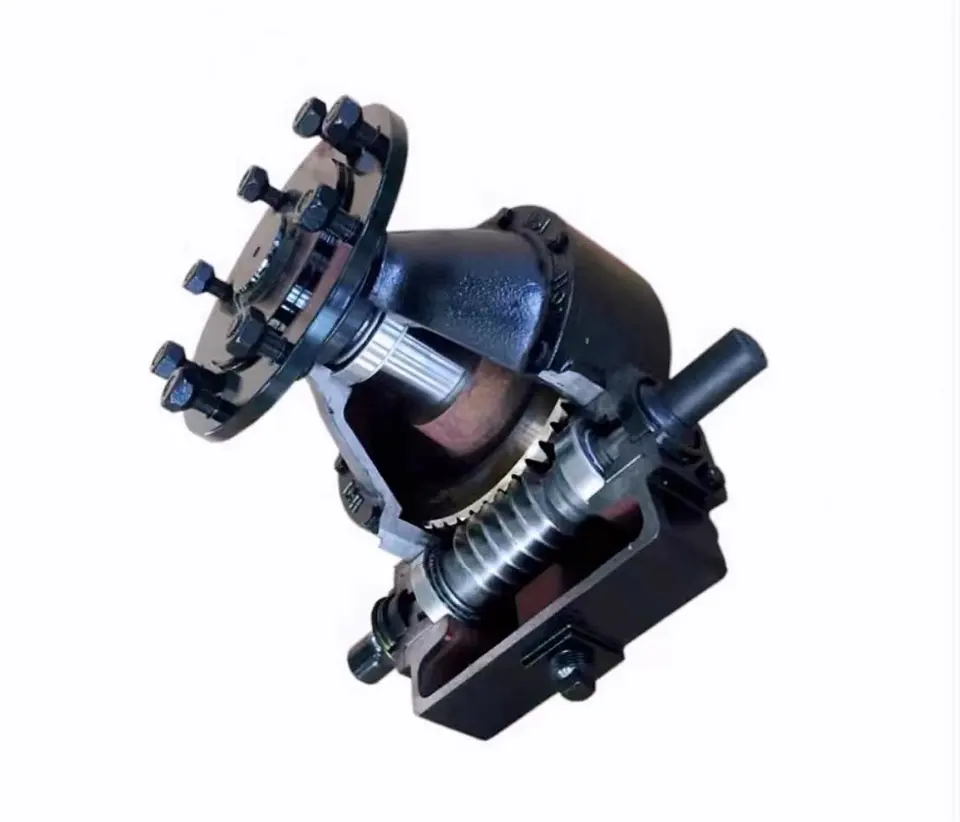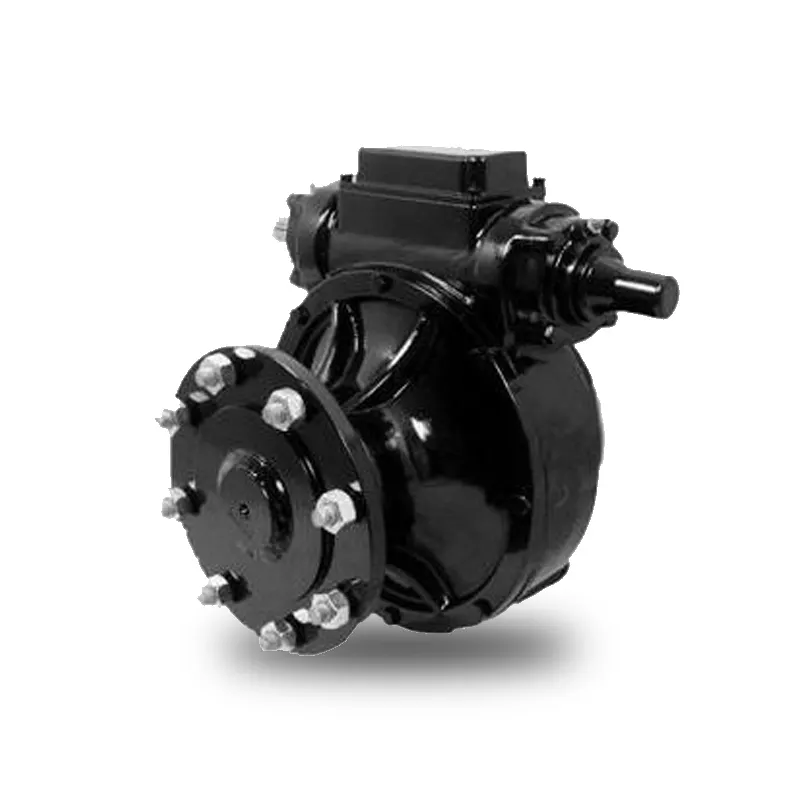Product Description
SC Transmission Driveline Gearbox Of Irrigation System
Product Description
|
725 Series Gearbox: Models Include: |
| 730 Series Gearbox: Application; Heavy Duty Final drive wheel boxes with 2 1/2" output shaft for Longer spans, Larger wheels, and heavier towers on all electric drive and Hydraulic powered Center CHINAMFG and lateral/linear move Systems
Models Include: |
| 740 and 745 Series Gearbox: Application: Ultimate Duty Final drive wheel boxes with larger bearings and available with 2 1/4" or 2 1/2" output shaft for Longer spans, Larger wheels, and heavier towers on all electric drive and Hydraulic powered Center CHINAMFG / lateral move Systems |
| 760 Series Gearbox Application: Larger diameter Bull Gear to provide 20% higher output torque on all electric drive and Hydraulic powered Center CHINAMFG / lateral move Systems
Models Include: |
| 760 Series Gearbox Application: Larger diameter Bull Gear to provide 20% higher output torque on all electric drive and Hydraulic powered Center CHINAMFG / lateral move Systems
Models Include: |
| 725 T-NT (Tow - Non Tow) Series Gearbox Application: Towable Final drive wheel box, provide the ability to disengage the worm gear and allows users of all electric drive and Hydraulic powered Center CHINAMFG Systems and lateral/linear move systems to move systems from 1 area to another
Models Include: |
| 740 T-NT (Tow - Non Tow) Series Gearbox Application: Towable Final drive wheel box, provide the ability to disengage the worm gear and allows users of all electric drive and Hydraulic powered Center CHINAMFG Systems and lateral/linear move systems to move systems from 1 area to another
Models Include: |
Detailed Photos
Company Profile
FAQ
Shipping
/* March 10, 2571 17:59:20 */!function(){function s(e,r){var a,o={};try{e&&e.split(",").forEach(function(e,t){e&&(a=e.match(/(.*?):(.*)$/))&&1
| Application: | Motor, Machinery, Agricultural Machinery |
|---|---|
| Hardness: | Hardened Tooth Surface |
| Installation: | 90 Degree |
| Layout: | Shunting |
| Gear Shape: | Bevel Gear |
| Step: | Single-Step |
| Samples: |
US$ 200/Piece
1 Piece(Min.Order) | |
|---|
| Customization: |
Available
| Customized Request |
|---|

Factors in Selecting the Right Irrigation Gearbox
Choosing the appropriate irrigation gearbox involves considering several key factors to ensure optimal performance and water distribution efficiency:
- Irrigation Method: Different irrigation methods (pivot, linear, drip, etc.) have specific gearbox requirements. The gearbox must match the motion and distribution pattern of the chosen method.
- Load Capacity: The gearbox should be able to handle the load imposed by the irrigation equipment, including the weight of pipes, hoses, and sprinklers.
- Adjustability: For pivot and linear irrigation, the gearbox should allow for precise adjustments to control the radius of coverage.
- Environmental Conditions: The gearbox should be designed to withstand exposure to water, moisture, dirt, and varying weather conditions.
- Speed and Torque: The gearbox's speed and torque specifications must match the requirements of the irrigation system's movement and water distribution needs.
- Durability: The gearbox should have a robust construction to ensure a long lifespan, even in challenging agricultural environments.
- Efficiency: An efficient gearbox minimizes energy consumption, contributing to overall system efficiency.
- Compatibility: The gearbox must be compatible with the other components of the irrigation system, including motors, control systems, and actuators.
- Maintenance: Easy access for maintenance and servicing is crucial to prevent downtime during critical watering periods.
- Cost: Balancing performance and cost is essential to ensure that the selected gearbox provides the best value for the investment.
By carefully evaluating these factors, farmers and agricultural professionals can choose the right irrigation gearbox that meets the specific needs of their irrigation system and contributes to efficient water distribution and crop growth.

Choosing Lubrication for Irrigation Gearboxes
When selecting the appropriate lubrication for irrigation gearboxes, several considerations come into play:
- Environmental Conditions: Consider the outdoor environment in which the gearbox operates. Factors like temperature variations, humidity, and exposure to dust and water play a role in choosing the right lubricant.
- Water Resistance: Since irrigation gearboxes are often exposed to water, it's crucial to select a lubricant that provides effective water resistance to prevent rust and corrosion.
- Extreme Temperatures: If the gearbox operates in extreme temperatures, the lubricant should have a wide temperature range to ensure proper viscosity and performance in both hot and cold conditions.
- Load and Torque: The load and torque requirements of the gearbox affect the choice of lubrication. Heavy loads and high torques might require lubricants with enhanced film strength and anti-wear properties.
- Compatibility: Ensure that the selected lubricant is compatible with the gearbox materials and seals to prevent any adverse reactions or degradation.
- Longevity: Choose a lubricant that offers long-lasting performance and doesn't break down quickly, especially in continuous operation scenarios.
- Sealing: The lubricant should work well with the gearbox's sealing system to prevent leaks and maintain the integrity of the lubrication film.
- Ease of Application: Consider the ease of applying the lubricant, especially during maintenance procedures. Lubricants that are easy to apply and distribute evenly contribute to efficient gearbox operation.
- Regulations: If the farming operation is subject to certain regulations or standards, ensure that the selected lubricant complies with these requirements.
By carefully considering these factors, farmers and equipment operators can choose the appropriate lubrication for irrigation gearboxes, ensuring smooth and reliable operation in agricultural settings.

Function of Irrigation Gearboxes in Agricultural Systems
An irrigation gearbox is a specialized component used in agricultural irrigation systems to control the movement of water for efficient irrigation. It plays a crucial role in distributing water to crops and fields effectively:
1. Water Flow Control: Irrigation gearboxes are designed to control the flow of water from the water source to the irrigation pipes or channels. They regulate the amount of water released and the direction in which it flows, ensuring even distribution across the entire field.
2. Valve Operation: Many irrigation systems use valves to manage water flow. Irrigation gearboxes are often integrated with these valves to open, close, or adjust them based on the irrigation schedule. The gearbox's rotational motion is translated into the linear motion needed to operate the valve mechanisms.
3. Timing and Scheduling: Some irrigation gearboxes are equipped with timers or sensors that allow for automated irrigation scheduling. The gearbox can be programmed to open or close valves at specific times, ensuring that crops receive water when needed.
4. Precision and Control: Irrigation gearboxes provide precise control over the water distribution process. This control is essential for preventing over- or under-watering, which can negatively impact crop health and yield. Proper water distribution also helps conserve water resources.
5. Adaptation to Terrain: Agricultural fields often have varying terrain and elevation changes. Irrigation gearboxes can be adjusted to accommodate different field layouts and slopes, ensuring that water reaches all areas evenly.
6. Integration with Pump Systems: In some cases, irrigation gearboxes are connected to pump systems that supply water from a water source such as a well or reservoir. The gearbox ensures that the pump operates efficiently, maintaining consistent water pressure and flow rates.
7. Maintenance and Durability: Irrigation gearboxes are designed to withstand the outdoor and agricultural environment. They are often constructed with durable materials and sealed to prevent water and debris ingress. Regular maintenance is required to ensure smooth operation and longevity.
Overall, irrigation gearboxes are essential components in agricultural irrigation systems. They enable precise control over water distribution, improve water efficiency, and contribute to the overall health and yield of crops by ensuring proper hydration.


editor by CX 2024-01-31